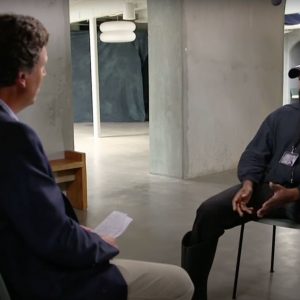
Petaluma, California once boasted the title of Egg Capital of the World, and every spring the residents flock into downtown to celebrate the main event of the year: the Butter and Eggs parade. While I do appreciate tractor processions and cow-pie tossing contests, the festivities were never for me. But being a Sonoma County resident means that you’ll inevitably encounter agriculture. Whether it be vineyards or cattle pastures, Sonoma County’s economy revolves around the fertile soil and agreeable climate of the Northern California coast. Many of my childhood friends participated in 4H or Future Farmers of America, programs intended to nurture the next agricultural generation of the United States, and through these programs raised lambs and steers to be auctioned off at the annual county fair. I always questioned the unsettling desensitization against violence in these children’s programs, but upon learning more about the beef industry, I was shocked at the degree of objectification that fuels America’s growing demand for beef.
When I was 16, I visited a friend from high school at the county fair. She was a Future Farmers of America star, winning the national Dairy Bowl competition, being crowned our district’s Dairy Princess, and coming from an award-winning dairy, to which she plans to return after attending college. At the fair, she was preparing to auction Bonsai, the steer she had been raising for the past year. (His name was intended to be “Banzai” after the Japanese military attack method, so my friend was miffed when I informed her that her steer’s name actually referred to a miniature potted tree.) Hearing how much the living, breathing creature who had just licked my arm went for per pound was unsettling enough, but learning about the process that went into creating Bonsai’s oversized stature was equally disturbing.
Cattle are built to eat grass. However, one beef cow needs more than an acre of grazing land, so unless cattle production is decreased, grass-fed methods are largely unfeasible, considering the staggering demand for beef in the U.S. This method is also more expensive for the farmer, as a grass-fed cow takes longer to reach slaughter weight, slowing down the rate at which farms can churn out beef. Federal subsidies and the prominence of the modern factory farm, complete with the use of chemical fertilizers, mean that corn is widely produced and excessively cheap. The low price of corn, the portability of grain, and the incentive to fatten calves up as hastily as possible made corn the heart of the modern feedlot. Before this modernization, beef cows could be kept alive for 5 years, but with the help of corn, they can now reach slaughter weight at 14 to 16 months old. The problem, however, is that cattle are not built for a grain-based diet and often get sick to the point of death. To prevent their cattle from dying en-masse, feedlots administer an extraordinary amount of antibiotics along with hormone injections to bolster growth. Even with an enormous amount of medication, a cow’s digestive system would not be able to handle a grain-based diet for more than six months.
The demand for beef in the U.S. is higher than ever, with the average American eating 71.4 pounds of red meat per year as of 2012. With demand so high, it’s no wonder farms must objectify their animals in order to maintain production rates. (Or shall I say, “grain-consuming animal units,” as the USDA prefers to call animals.) Instilling this same idea into the minds of the next agricultural generation is a necessary component of 4H and FFA programs. In fact, 4H instruction booklets on how to properly care for a steer have URLs reading “working with your beef,” rendering the living creature into food even before slaughter and teaching the child that the animal is an object. These instructions provide guidelines for how much grain the steer should be fed so that they will gain several pounds per day and reach their maximum weight by the time the fair rolls around. This directly relates to Carol J. Adams’ notion of the absent referent. Consumers distance themselves from the fact that they are eating animal carcasses by calling their food sirloin, burgers, or veal. Even “beef” and “steak” are concealing the truth of “slaughtered cow.” This distancing explains why so many meat-eaters find no issue with their animal consumption; “sirloin” comes from a thing that was intended to be eaten. The beef was never alive, justifying treating the animal as a grain-consuming machine.
The industrialized beef industry is a bizarre system that hinges upon corn surpluses and chemical fertilizers. It may seem nonsensical to administer colossal amounts of medications in order to maintain a corn diet for cattle, and it is saddening to know that this is still more economically viable than creating a more sustainable system. And with the desensitization that occurs within youth agricultural programs, it is doubtful that the next generation will see their steers as living creatures rather than beef hangers. A change in language is a great start, but something substantial will need to be done within 4H and FFA programs so that youth can begin to think beyond the senseless nature of the current industry. Current programs legitimize corn-based feedlots, medications, and artificial hormones, and this system is unsustainable.




